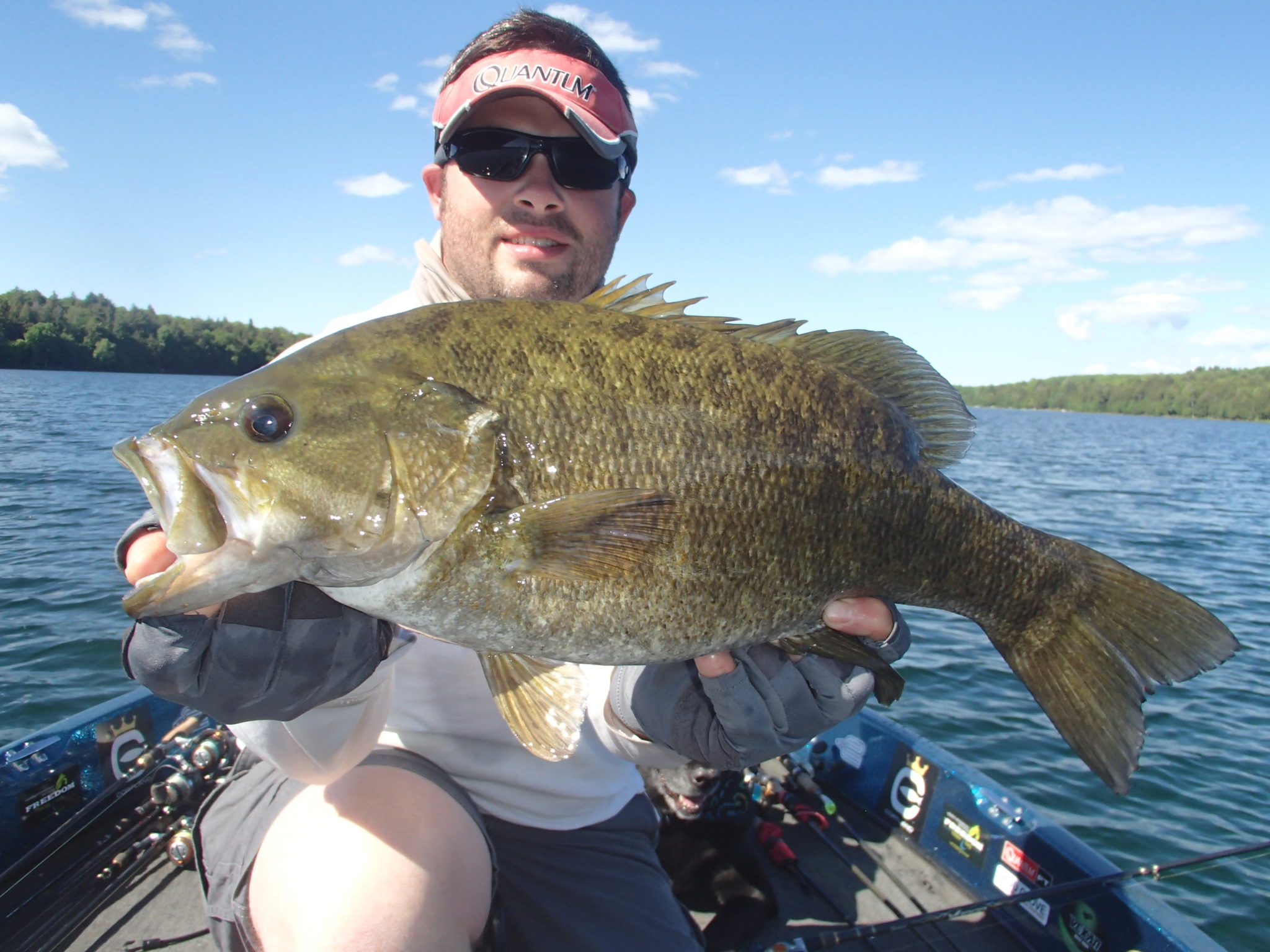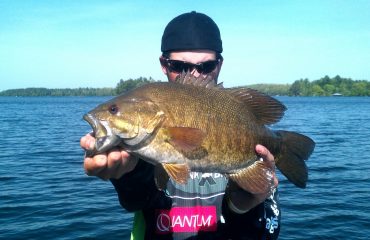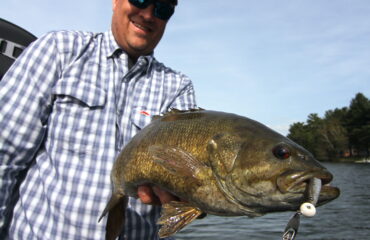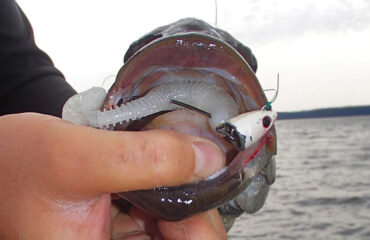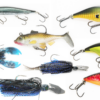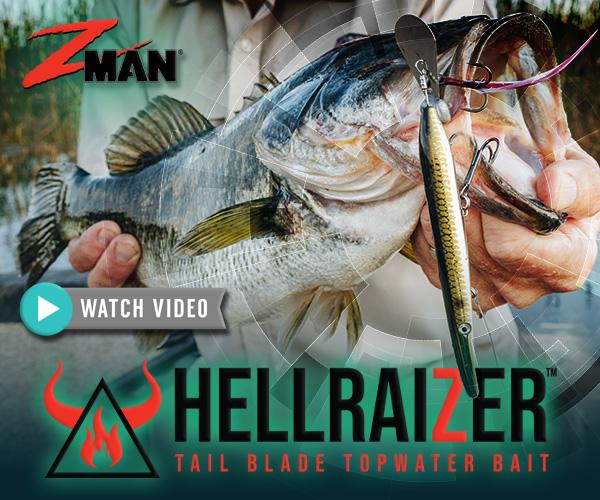Key Insights to Monster Bass
By Andrew Ragas
Bass thumb is what many of us strive for, and beyond these battle scars there is a lot to like about catching several bass in a day. However, if you fish often, there comes a certain point in the season where action fishing and routinely catching numbers becomes stale. Pursuing fish of average size isn’t challenging or motivating anymore. This boredom hits every year, occasionally becoming chronic in my boat once late summer and fall rolls around. I love the fast action of rod benders and 50+ fish days, but nothing challenges and satisfies me more than the high risk and high reward of trophy hunting.
One single bite from a giant fish will make or break the trip. When targeting the largest specimens in the lake, we purposely weed out the small fish. Fishing becomes increasingly difficult and challenging. It is what we make of it.
Throughout the country, lakes are managed for different purposes and fishery goals. Lakes could be managed for numbers and high density bass populations where average fish sizes are commonly 12 to 16 inches. These action fisheries dominated by a bass biomass can provide quality fishing as well as harvest opportunities. Meanwhile, other lakes could be managed under special regulations for big fish and far lower population density. These are typically catch and release lakes. On these types of lakes on my home waters of Wisconsin, average fish sizes are 18 inches and better, but are far fewer in number. Bass are not the dominant and most abundant gamefish in the lake, and their special regulations only exist for maintaining their low number, as well as controlling aquatic invasive species such as rusty crayfish and rainbow smelt. As a result of their management, they seldom produce numbers, but highest odds for monsters. Many inland largemouth and smallmouth fisheries in northern lakes throughout Wisconsin, Michigan, and Minnesota are maintained under some of these management needs and basic guidelines.
To target trophy smallmouth or largemouth, there is no one size fits all pattern and strategy. Every specific fishery could require a unique bag of tricks. Understand also that not every bass fishery is managed for trophies, or is capable of producing them. Every body of water and its bass fishery has evolved differently and has an intricate topographical and fishery make-up. Understanding all of the specific waters you fish, knowing the preferences and behavior of its big bass, and identifying these trophy fisheries will lead to highest probability of catching monster bass.
One bite, everyone knows the rules. When targeting trophy inland bass on northern lakes, the following valuable insights can help make your trophy hunts successful.
Food Factors
Every fishery is driven by food availability, and their bass have specific feeding preferences. A combination of native crayfish species, yellow perch, or pelagic baitfish such as ciscoes, herring, and rainbow smelt could encompass that lake’s forage. On other lakes, aquatic invasive species such as rusty crayfish that took the lake bottom under siege and booted native species could be all that’s available. Or on the Great Lakes for instance, it’ll be alewives, round gobies and a conglomeration of several other native and non-native species.
The size, growth rates, and weights of trophy smallmouth are a product of that lake’s forage availability and abundance.
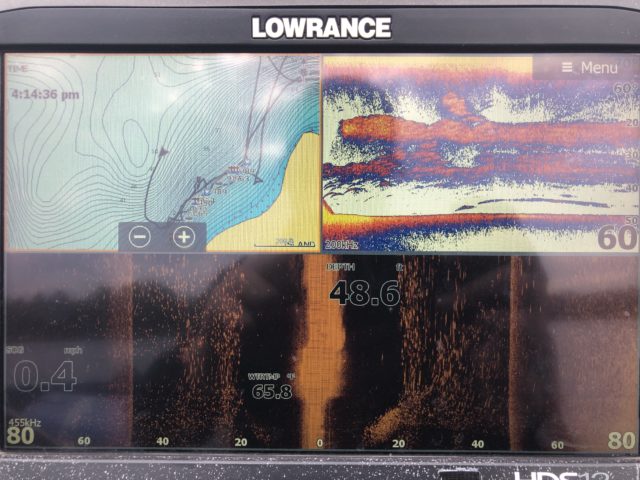
Big smallmouth require high protein. On deep, clear trophy lakes where aquatic biomass is low, bait is less available. Therefore smallmouth feed less. However, cisco availability helps them achieve their wide bodies and grouper-like status. On typical mesotrophic lakes, native crayfish species, and rusty crayfish are an endless food supply. Their abundance along the lake bottom enables smallmouth to feed often, maintaining their body weights and growing heavier. Some lakes altogether might not have these prey and therefore abundant schools of juvenile yellow perch make-up that fishery’s primary forage.
The first step to patterning trophies is understanding the food web and making these forage connections. Once figured out, patterns and locations are established, and feeding preferences and behaviors of bass are learned. Knowing the forage and feeding patterns will enable you to pattern trophy smallmouth on every lake.
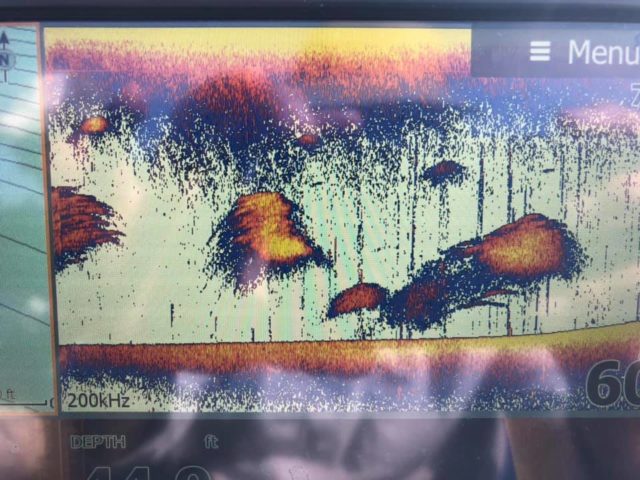
Every fishery is driven by food availability, and their bass have specific feeding preferences. The size, growth rates, and weights of trophy smallmouth and largemouth are a product of that lake’s forage availability and abundance. Summer 2019 produced some of the largest baitfish hatches I’ve ever seen on screen.
Moon Phases
Anglers have long believed that lunar phases affect fishing results, but there has been little catch data to test that assumption. The moon doesn’t influence bass like it does to improving walleye and muskie fishing, but it’ll play a hand in bass spawning movements, and activating surrounding underwater life.
In Wisconsin’s northwoods, May is the most productive month for smallmouth over 5 pounds. Catch rates increase when fish are in or near spawning areas. The largest females often move into the shallows during May’s full moon. Then a month later in June, largemouth spawn, and they too move into the shallows under June’s full moon. The correlation of moon-influenced bass catches then fades out for the rest of the year.
Biologists theorize that moonlight illuminates shallow water, allowing big bass to locate nests and lay their eggs without being bothered by nest invaders.
A big catch can occur on new moon and full moon days, especially when there isn’t any weather or other peak activity influencing fish activity and feeding. My personal best smallmouth bass (22” 7.5 lbs) and largemouth bass (23”, 6.5 lbs) to date were each caught on calm, clear, lifeless post-frontal bluebird sky conditions during May 2018 full moon, and August 2019 new moon.
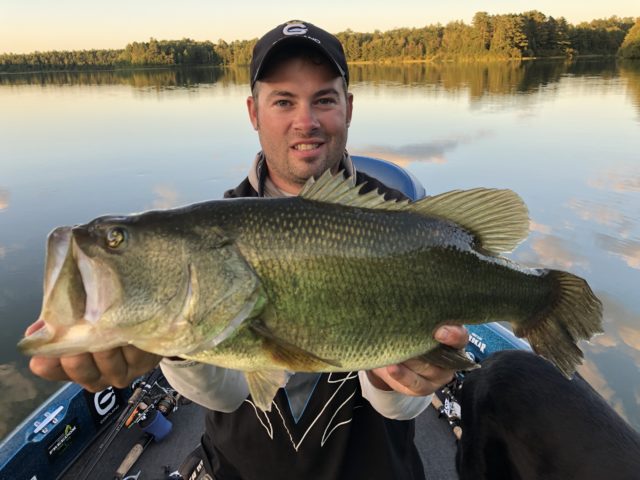
A big catch can occur on new moon and full moon days, especially when there isn’t any weather or other peak activity influencing fish activity and feeding. The author’s biggest bass to date were each caught on calm, clear, lifeless post-frontal bluebird sky conditions during full and new moons. This largemouth bass measured 23”, at 6 lbs on an empty stomach.
Prioritize Good Weather & Conditions
Weather trumps everything. It is the single most important variable in fishing, influencing and controlling all lake and underwater activity. Bass anglers who study weather forecasts and fish according to them are the best meteorologists and better anglers for it.
All weather conditions affect bass behavior and activity levels. Bass have acute senses about the weather. Their swim bladders and sensory organs drastically react to passing fronts and pressure changes. Fish display positive and negative reactions to changes in weather depending on its severity. For every weather pattern, bass will always display a positive or negative reaction in response to it.
We don’t predict the weather, but we utilize forecasts to help make most of our fishing decisions, strategies, and lake selections on the projected conditions that will play into our favor. These conditions always include wind speed and direction, air temperature, sunlight exposure and light penetration, clouds and overcast skies, incoming weather fronts, humidity levels and dew points, sunrise & sunset, and lunar phase. Each is a major consideration in making calculated fishing decisions and strategies.
The study of weather and how it shapes fishing is fascinating and one that makes you think like a fish more. One of the most important aspects to the successful planning and execution of a trophy hunt is scheduling during periods of best weather and anticipating how fish will respond positively and in favor of weather and conditions. If you aren’t studying the weather and forecast the night before a trip, and then basing your lake selections on it, you aren’t going to fish efficiently or successfully. Worse yet, you might end up fishing at the wrong body of water that day. During any weather system, you should always be at a body of water that fishes favorably to the weather and conditions you are being dealt with.
Boat Control
Generations of anglers have relied on the manual power of paddles, poles, oars, and heavy hand-deployed rope anchors to hold boat position, but times are changing. Today’s high performance fishing and multi-species boats are equipped with spike-style shallow-water anchors mounted to the transom, and hands-free remote control spot-locking systems that link and harness the positioning powers of your bow mount trolling motor and GPS chart plotter.
While I do not have Minn Kota Talons or Power Poles mounted to my Ranger 681VS, I do have spot lock on my Minn Kota Terrova, and this GPS anchoring system is the single most important piece of technology I have and it is utilized several times per day. Spot locking expands anchoring ability over deep water. Majority of my trophy smallmouth in summer and fall are caught while the boat is anchored and positioned over deep water with the Terrova’s GPS.
Today, Minn Kota manufactures sophisticated trolling motors with GPS anchoring capability; the Terrova, Ulterra, and Ultrex. These models allow you to lock onto specific coordinates regardless of current, wind, or waves. Spot lock works like an electronic anchor to hold your boat in place by firing up the trolling motor if you move over five feet off position.
Boat control and positioning will change the way you fish, making trophy hunting efficient and hands-free.
Electronics Efficiencies
Fishing any lake successfully requires a keen sense and comprehension of electronics. In order to be successful at picking apart lakes and hunting trophies, you must use your units to their fullest potential and capacity, be good at map reading, and learning to understand the readings produced by your locators and navigation charts.
Operating with a combination of Lowrance HDS 12 and Elite Ti units, I always keep their Navionics Hot Maps Platinum chips maintained and updated at the latest versions. Every year, many of the most topographically rich bass fisheries are updated with greater topographical detail and contours.
When navigating your way around the lake, idle around locations and chart those areas first until you feel more comfortable fishing them. A combination of Navionics and CHIRP on my screen’s top two panels helps find location and fish below, and side imaging on the entire lower panel helps me identify structure, bottom content, and nearby forage species. Drop some waypoints onto all targets you find. Continue scanning the rest of the spot until completed. Turn around and then start fishing.
Being adept in mapping and chart reading helps anglers learn how and why bass might be relating to the specific locations they’ve been located at and caught from. This will help you fish smarter and more efficiently in the long run, and help you eliminate unproductive periods of fishing.
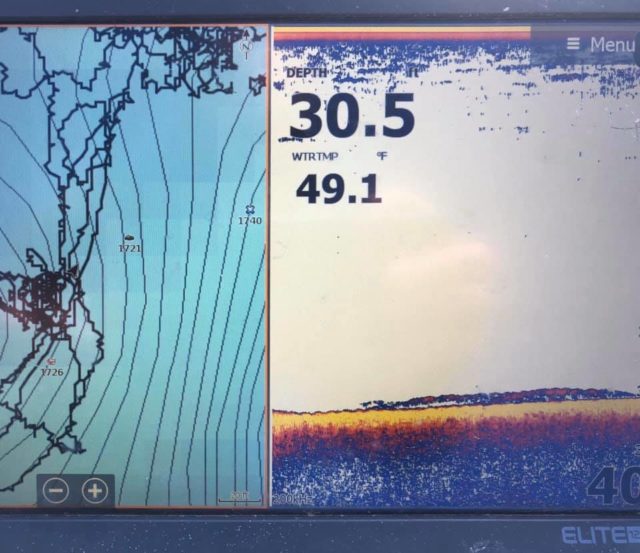
How keen are you with electronics and boat positioning? A full day camp-out over a wintering site will often produce these results on screen, with a large smallmouth I caught down below.
Peak Seasonal Periods
The trophy bass we pursue are wise creatures that have been around the block several times before. For instance, most of the 20 inch smallmouth bass we catch and release from the inland lakes of northern Wisconsin are irreplaceable 20 year old fish that are the most valuable members of the population. In many of our best waters, some of these fish are caught and released multiple times throughout a single season. With their conditioning to lures and locations, coupled with angling pressure by fishermen and today’s electronics, catching and releasing these trophies now requires more tactfulness, intellect, and strategic planning than ever before.
Our cold, fertile waters with a 6 month long growing season enables big smallmouth to live long prosperous lifetimes – far longer than anywhere else in North America. In recent fisheries surveys completed by the Wisconsin Department of Natural Resources, some of the oldest smallmouth bass on record have been aged between 25 to 28 years old.
With age comes lots of experience and lure rejections. On a typical inland Wisconsin lake with public access and average fishing pressure, a 20 year old smallmouth has seen hundreds of different lures in her lifetime. She has also been caught, handled, and released at least once or twice annually, too. To continue being caught that fish will have to be fooled by anglers with new bags of tricks. Not just presentational, but by schemes such as taking advantage of unique windows, scenarios, and peak periods in order to actually be able to catch them.
The trophy smallmouth bass knowledge I employ and educate to others was not acquired overnight. The thousands of hours I have invested and accumulated on the water have enabled me to identify windows and peak periods for every season and in some cases each week of every month. I have also been able to identify peak periods and unique windows for every specific lake I fish – only fishing them during those periods! This systemic identification of anticipating the best fishing odds and opportunities has resulted in superior results and good fishing, daily. The patterns can repeat themselves annually too. Today, all of the bass fishing trips I plan for and schedule revolves entirely around seasonal windows and peak periods for my fishing region and its specific waters. It’s an advantage I have over all bass fisheries, and every other bass angler I share the water with.
Catching trophy bass won’t be as consistent or successful without prioritizing your precious fishing time around windows and peak periods. If you’ve identified them and know what ‘makes the lake click’ you’ll be able to tap into that fishery seasonally, monthly, weekly, and daily.
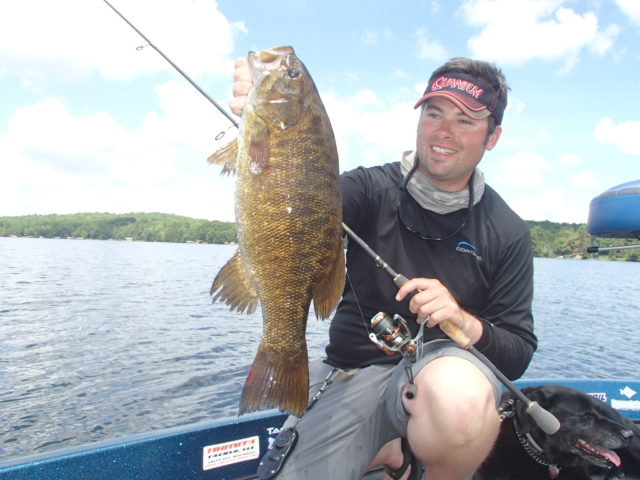
Catching trophy bass won’t be as consistent or successful without prioritizing your precious fishing time around windows and peak periods If you’ve identified them and know what ‘makes the lake click’ you’ll be able to tap into any fishery. The peak period during this calm, late June day was a mayfly hatch. Ripping hair jigs produced this trophy.
Deep Open Water and Offshore
Old habits are hard to break. Most angling pressure bass receive from lake fishermen is near shorelines. Look over the shoulder, and you will learn the best trophy bass fishing in the entire lake is out towards that direction where you’ll rarely ever see other bass boats fishing.
As the shallows and near-shore areas of lakes get fished the hardest, the trophy summer smallmouth and largemouth I focus on catching the most are the least pressured specimens of the lake.
Smallmouth bass are primarily offshore and deep structure-oriented fish year-round, only to be found shallow, up on some shorelines, in spring and during specific summer and fall scenarios when food availability and water temperature is ideal. Big, adult smallmouth spend majority of their lives in deep water, away from shorelines. While smaller members of the population are least educated and tend to favor living in the shallows until they reach a certain age and homing preference, the largest members of most smallmouth populations will usually live offshore, and around deep structure, where they will be least pressured and exploited. Largemouth on the other hand are more cover-oriented, eventually living on deep grass and green weedlines.
As our lakes near-shore habitats and locations continue to absorb the greatest number of anglers and exploitation, their much more expansive vast main lake and open water basins have gone ignored and mostly unpressured. Their trophy bass fisheries are still largely untapped and undiscovered by anglers.
Most bass fishermen mistakenly believe a lake’s biodiversity and fishing productivity lessens as you fish deeper water down towards its thermocline. That belief exists in part because it’s more difficult to consistently catch fish as you cover greater ranges of depth and large expanses of surface acreage. Bass populations in these main lake and open water environments might also be of lower density too. Even though these factors add to the level of fishing difficulty, don’t let fear of offshore fishing and reliance on fishing shoreline regions dictate your bass fishing strategy. In summer and fall, these regions of the lake will contain the highest number, and greatest probability of catching trophy bass.
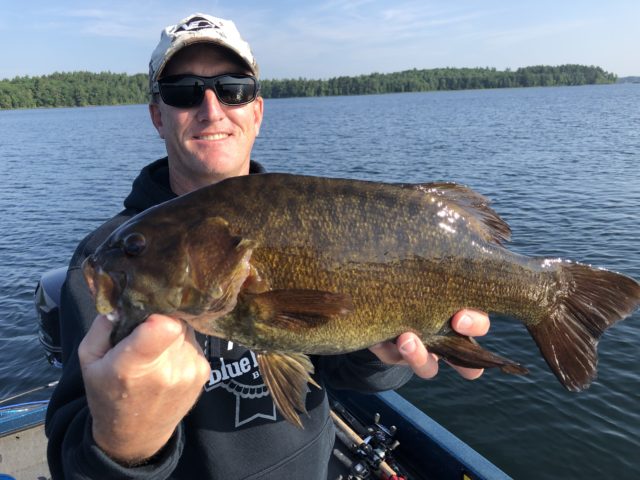
Patterning cisco schools during a mid summer 2019 trip helped guide customer, Jeff Langlois catch his personal best smallmouth bass.
Identifying Money Spots
Majority of the trophy smallmouth I catch are structure-oriented fish. In spring, they’ll revisit their annual staging sites and spawning locations. In summer, they often settle on precise deep structural locations to use for comfort, protection, and ambushing. In fall and winter, they reuse the same wintering holes every year.
Spots are so clique in bass fishing and I’ll never fish an area just for the sake of fishing it. That location must have a purpose for holding big fish at any point in the season, and my time invested in it must have reason.
Every lake has a handful of high percentage locations and money spots that consistently and reliably attract and hold big bass. In order to be a good bass angler, you’ve got to think beyond a spot. Understand the big picture for why it’s being utilized by bass at any given time of the year. Visualize what could be happening underneath the boat, and how fish are utilizing the spot. When results are had, process why that bass was there, and what made it be a good spot at the time you caught it.
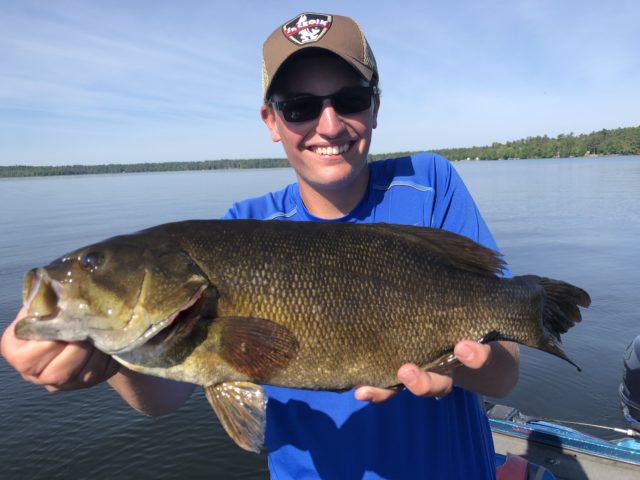
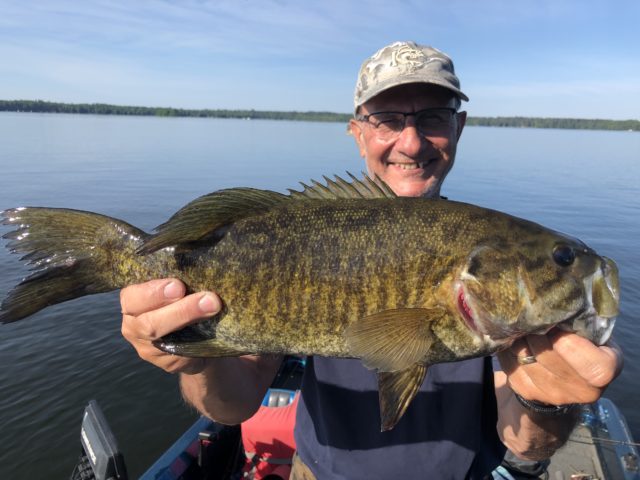
Every good bass fishery has money-spots that will hold fish throughout the year. Father and Son, Joe and Gabe Mordente, caught these back-to-back 5 pounders and personal best fish within a few minutes apart.
Pressured Waters
Many of the best bass fisheries happen to be the most pressured lakes in the country. Their trophy bass are more elusive as a result. I am not a fan of fishing pressure and high traffic water, but pursuing hot bites throughout the year brings me to these fisheries. It used to be us versus bass, but on many popular waters now we’re also competing with other anglers and sharing spots with them. On popular lakes, boat traffic and angling hours are considerably high. On my backyards of the Minocqua and Lac du Flambeau chains, bass tournament circuits and derbies visit every weekend. I recall having both fisheries all to myself 10-15 years ago and nowadays I’m guiding on them with dozens of bass boats competing against one another for a marginal check.
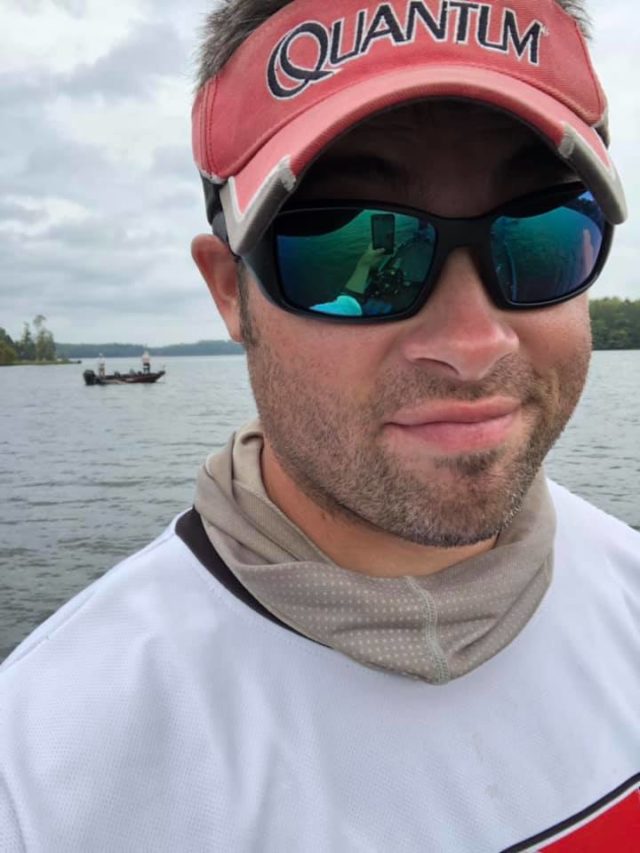 Guiding enables me to fish a lot popular bass fisheries and community lakes mid-week, giving us best access and least amount of pressure and competition on spots from other boats that would otherwise fight for territory with us on weekends.
Guiding enables me to fish a lot popular bass fisheries and community lakes mid-week, giving us best access and least amount of pressure and competition on spots from other boats that would otherwise fight for territory with us on weekends.
Intimate knowledge of the areas you fish is vital. This is my home field advantage. On busy lakes that receive a high number of visiting bass boats and weekend tournaments, you need to find spots that are off the beaten path. Seldom fished areas will contain the least pressured bass. Many weekend warriors will not take the time to learn fisheries and all the nooks and crannies of near-shore and off-shore structures. To feel the pulse of a lake, you have to fish it a lot to know its intricacies. This gives my boat an advantage in dealing with fishing pressure.
On busy water, I often observe other boats improperly fishing certain spots and wrong methods. We’ll wait them out, and move in after they move on.
To avoid angling pressure, fish at sunrise or after dark while nobody else is on the water. Also, try scheduling mid-week trips on them and during off-peak periods. For example, I might guide on a busy lake chain during a Tuesday or Wednesday when boat traffic is down and most others won’t be fishing. By doing this, bass are recovered and not being pounded. Bass that aren’t pressured are easiest to catch.
Beyond using lures that fish see often, experimentation pays off. When guiding, I always work from the back of the boat while my two customers are up front and fishing with the proven fish catchers. I always tinker and experiment with something else to quickly find new bites and patterns with baits that are outside of the box. Out-of-the-ordinary presentations that fish don’t see often can be very good producers on fisheries with pressured bass.
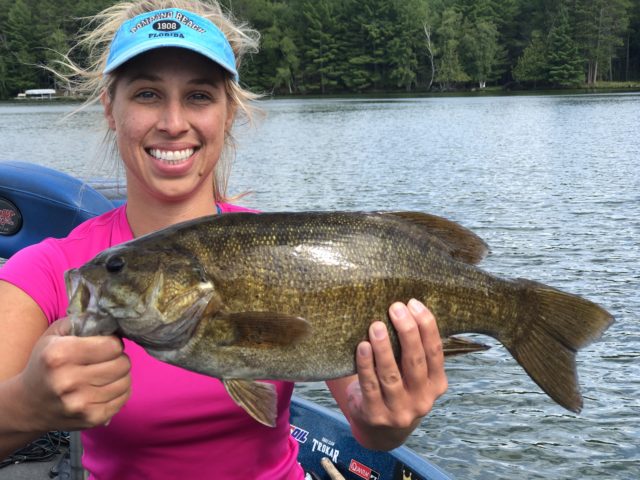
On high-pressured fisheries and community lakes, having spots off the beaten path, and trying new methods other anglers aren’t doing will produce. Rocks and humps are the most pressured areas, but smallmouth are wise to move into weeds and slop that smallmouth anglers rarely fish. Amanda Ragas holds up a 20 inch smallmouth from August 2019 that was caught on a swim jig with creature.
Each trophy bass fishery is unique, and being able to figure them out for one big fish is what makes trophy hunting so fascinating, challenging, and rewarding. Trophy hunting is my favorite way to bass fish, and these insights are just a few of my observations and systemic processes.
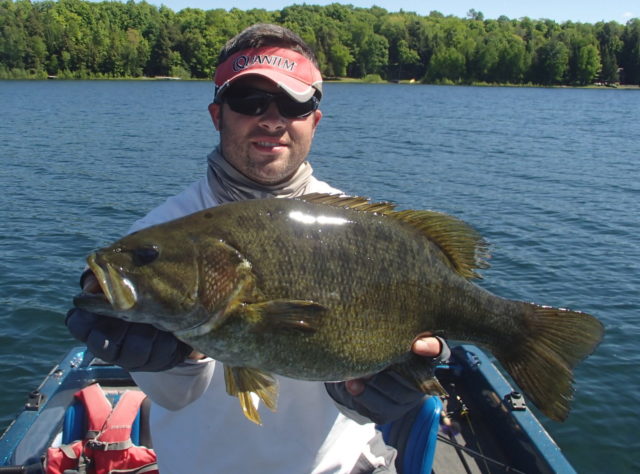
Andrew Ragas splits time between the Chicago area and Wisconsin’s Northwoods. Based in Minocqua, WI, he specializes in trophy bass fishing and offers guided trips from May thru October. While big bass is the passion, he dabbles in multi-species as well. He may be visited online at www.northwoodsbass.com


